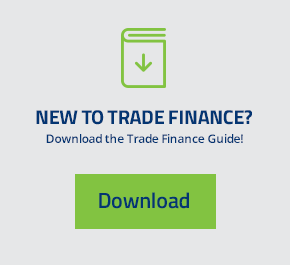In this post, Kenneth M. Tinsley, Senior Vice President of Credit and Risk Management and Acting Chief Risk Officer, discusses how the Bank is working to help small businesses with international expansion. He talks about available trade finance products and how EXIM Bank can help.
Question: Tell me about the role EXIM Bank plays in international finance?
Kenneth Tinsley: Particularly with respect to trade finance, we help fill in the gaps not funded by the private market to support U.S. exporters when they sell products oversees on a credit basis. And with small businesses, there is often a big gap. Small businesses that are exporting aren’t generally attractive to commercial banks and private credit insurers. Because they’re small, they can’t take on the risks on their own and commercial banks are not willing to lend against their export receivables. Our role is to step in and fill that void when businesses aren’t able to assume the credit risk and access funding associated with their export activity.
Q: Can you tell us how the bank helps small businesses?
KT: Before they even start exporting, many businesses need working capital. We offer pre-export assistance when lenders aren’t willing or able to do so. Small businesses in particular have trouble getting money, especially when they say they want to use it for overseas expansion.
We have several products to give businesses working capital. We offer one that allows exporters to buy materials associated with manufacturing a product that they plan to export. Another is an insurance policy that covers most of a small exporter’s sales. This is particularly attractive to those who have a lot of business in one market or more than one buyer.
We also offer a select risk product where an exporter can get insurance on only one buyer. Perhaps they have concerns about repayment due to the political or economic situation and they want some guarantees on that particular partner.
In summary, we offer three types of products in respect to small businesses: pre-export working capital, and post-export support for either all or a reasonable spread of their export credit sales or one transaction.
We also offer supply chain finance, which primarily benefits small suppliers of major exporters, or indirect exporters, by monetizing their receivables. For example, if you sell parts to a large exporter and the terms are 60 days, we can help finance those deals so you’re paid more quickly through a commitment to the bank that’s lending to the primary exporter.
Q: In which regions of the world does the EXIM Bank operate the most? Are there any regions of the world where you have seen increased activity in the last two to five years?
KT: For small businesses, Mexico is a big market because of its close proximity, and by extension Central and South America are large partners.
We have seen some shrinkage in small business exports in the last two to five years because of the financial crisis. But there is growth in areas such as Sub-Saharan Africa and parts of Asia and Europe.
Q: What management issues do you believe U.S. businesses should know more about when exporting?
KT: Every market is a little different. If you’re new in the export space or if you’ve been exporting to say Mexico and want to go to Central America and sell to those markets, the experience isn’t necessarily directly related. It can be challenging. You have to do your homework about a particular market or region since things can vary.
And in terms of doing your homework, we look at things such as if businesses have done site visits, gone to the market and met with prospective customers. We want to know the extent to which they’re familiar with the credit culture in a particular market to make sure the terms are standard. We’re also looking to see if companies have experience exporting and how they’ve managed export credit sales in the past.
Small businesses should use EXIM to expand their export credit sales. The more they put into it in terms of doing their homework before and doing risk-based due diligence, the better. It’s a partnership, not just EXIM Bank’s risk. The more you contribute, the better the results.
Q: What else should businesses know in terms of understanding the products you offer?
KT: If you’re new to exporting in particular, it can be daunting. There are a lot of things to try to get your arms around in terms of basic due diligence.
As part of that due diligence you have to look at risk mitigation products. That can also be daunting. We try to have policy or commitment language that’s easy to understand, but that can be hard if you’re new to the bank, products or international finance.
Products vary by market and we have to price risk so that minimally we will break even. So we look at the business that’s presented, the country risk, the buyer risk as well as pricing in the private market, which we can’t undercut. It’s an interesting balance of factors that goes into making decisions. But we also don’t want our exporters to be at a disadvantage when going up against foreign competitors, many of which get pricing assistance from their own countries.
